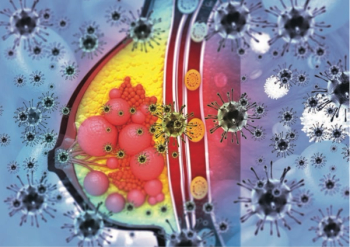
- ONCOLOGY Vol 12 No 2
- Volume 12
- Issue 2
Revised Manual on Radiation Oncology Nursing Available
A revised version of the Manual for Radiation Oncology Nursing Practice and Education is now available from the Oncology Nursing Society (ONS). The revised manual outlines a radiation therapy course and an associated clinical practicum.
A revised version of the Manual for Radiation Oncology Nursing Practice and Education is now available from the Oncology Nursing Society (ONS). The revised manual outlines a radiation therapy course and an associated clinical practicum.
Appropriate utilization of nursing resources in radiation oncology is of major concern due to health care trends for the 1990s that influenced most health care institutions, including departments of radiation oncology, to restructure, reengineer, or downsize. In such an environment, when radiation oncologists plan and direct treatment and radiation therapists deliver treatment, radiation oncology nurses are faced with questions relating to their unique role and whether or not it is cost-effective.
The manual outlines the role of the radiation oncology nurse and the scope of practice, provides recommendations for practice and minimum staffing requirements, and outlines the body of scientific knowledge needed and the art of caring for radiation oncology patients. The manual focuses on assessment, collaborative management, documentation, and patient/family education, and incorporates extensive sections on quality improvement and radiation protection.
The manual is meant to provide a framework for educating the oncology nurse to practice in the radiation ontion oncology patient in any setting. It may be used to define competency measures for staff and to identify nursing resources required to deliver that competent care.
The manual can be purchased for $25 (ONS members) or $30 (nonmembers). To order the manual, contact: ONS Customer Service Department, 501 Holiday Drive, Pittsburgh, PA 15220, or call (412) 921-7373.
Articles in this issue
almost 28 years ago
Quantitative Assay Provides Effective Method for Monitoring Bladder Canceralmost 28 years ago
Extension of Human Cell Life-Span Reportedalmost 28 years ago
Abnormal DNA Structures May Hold Key to Early Cancer Detection, Treatmentalmost 28 years ago
SGO Clinical Practice Guidelines: Introductory Remarksalmost 28 years ago
ACS Issues Action Proposal on Prostate Cancer in African-Americansalmost 28 years ago
HMO vs Fee-for-Service Care for Breast Canceralmost 28 years ago
ONS Publishes Manual on Psychosocial Aspects of Oncology Carealmost 28 years ago
Cigarette Smoking Among Adults-United States, 1995almost 28 years ago
NCI Announces New Cancer Survivorship Training ProgramNewsletter
Stay up to date on recent advances in the multidisciplinary approach to cancer.

















































































